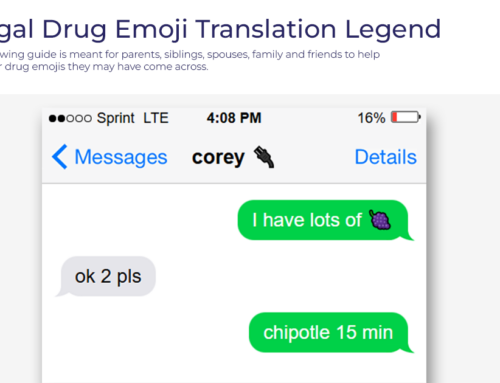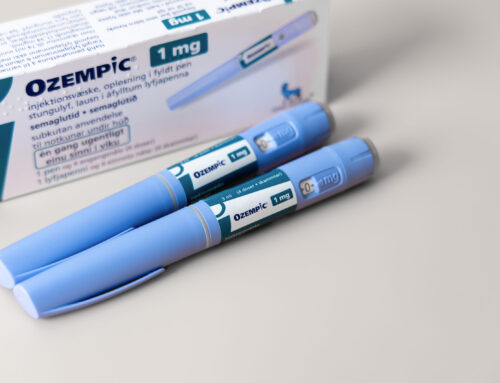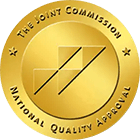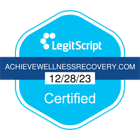Substance use disorder treatment and mental health are unlike other areas of medicine in many ways. Addiction is different from most other diseases, so addiction treatment requires unique and innovative approaches in order to be effective.
Addiction has more in common with mental health disorders like depression, anxiety, and OCD than other illnesses. It is a disease of the mind, and it is chronic and incurable, as of 2025 at least. However, addiction is quite manageable with the right type of treatment and a patient who is willing to participate in their own recovery.
So, how do we ensure that addiction treatment in NJ and the rest of the country continues to evolve and innovate, never settling for merely “good enough”?
This Achieve Wellness and Recovery article explores the present and future of addiction treatment in NJ, the evolution of hybrid addiction treatment, and other innovations.
What is Hybrid Addiction Treatment?
Hybrid Addiction Treatment combines traditional in-person group and individual therapy with digital or virtual therapy methods, Medication-Assisted Treatment (MAT), and partial hospitalization to create a comprehensive and flexible approach to addiction treatment. This model makes it possible for therapists and clinicians to craft a highly individualized treatment plan for their patients. The goal is to better meet the needs of a diverse range of people with substance use disorders.
Hybrid Addiction Treatment:
- Is modular, making it easier to create very different treatment plans for different people.
- Can be adapted to different needs and lifestyles, for example, outpatient and telehealth.
- Makes addiction treatment accessible to more people and easier to fit in their lives.
- Yields better outcomes because it is more flexible and adaptable to different needs.
What Was Wrong with the ‘Old’ Addiction Treatment Model?
The conventional alcohol and drug rehab in NJ followed a 28-day inpatient model, similar to the programs first developed in the late 40s and 50s. Millions of people found successful sobriety through that type of program, so it’s not that there was anything inherently wrong with them, per se. It just wasn’t necessarily right for everyone.
The problem was this model had a few shortcomings:
- The 28-day NJ inpatient rehab model didn’t work for everyone. Many people found themselves stumbling like newborn foals once they left drug rehab. They were given a list of meetings to attend and more or less left to their own devices. Many did go to meetings and managed to build recovery. But many more found themselves back where they started, stuck in opioid addiction, alcoholism, and despair.
- The inpatient residential rehab model wasn’t accessible to enough people. Either they didn’t have enough insurance coverage or money to pay for a private, 28-day inpatient rehab in NJ, or they had family or work responsibilities that made it impossible for them to put their lives on pause for a month to attend treatment—-even though they desperately needed addiction treatment.
How We Began to Make Substance Use Disorder Treatment Better
It was in the 1980s when addiction treatment centers first began to innovate and experiment with new ways of doing things. One of the main goals was to improve outcomes, resulting in more patients putting together more extended average periods of sobriety. Another was to avoid the ‘cookie-cutter’ one-size-fits-all model of treatment. Instead, recognizing that five different people who all have a substance use disorder with the same substance may need five different approaches to get the best results. The evolution of dual-diagnosis care was one outcome of this.
The three main goals were:
- Make substance abuse treatment more effective at giving people a solid head start in recovery and provide more support after the first 28 days.
- Create addiction rehab programs that are accessible to more people and adaptable to different lifestyles and needs rather than ‘one size fits all.’
- Develop more customizable treatment programming that could address people with vastly different needs and address co-occurring disorders and trauma.
Addiction Treatment Innovation 1980s-1990s
One of the major innovations in substance abuse treatment in the 80s was the introduction of the partial hospitalization program or PHP and what is sometimes called the Florida Model. PHP treatment allowed people to attend a full day of therapy, groups, and counseling without the need to sleep overnight in a medical facility.
This not only helped people avoid the sense of being institutionalized, but it also helped control costs, which meant more people could go to treatment and even receive more than 28 days of care. Outpatient treatment alternatives like intensive outpatient programs (IOP) made substance abuse treatment in NJ easier to access.
IOP and OP treatment also made it possible for people to get as many as 60-90 days or more of continuous addiction treatment, and this resulted in better outcomes and more success at long-term sobriety.
Innovation in drug and alcohol treatment in the 80s & 90s was characterized by:
- Evolving levels of care, like partial hospitalization and new IOP models.
- A pivot from offering only inpatient institutionalized care in hospital-like facilities.
- The growth of aftercare, alumni departments, and case management.
Addiction Treatment Innovation 2000s-2010s
During the late 90s and 2000s, addiction treatment programs in NJ, Florida, and other “recovery hubs” in the U.S. began increasing their emphasis on dual-diagnosis treatment and other evidence-based treatment approaches. Several studies drew clear connections between co-occurring disorders like anxiety and depression.
Not only were as many as 70% of addiction treatment patients showing signs of other mental health disorders—-but a lack of diagnosis and treatment was leading to higher relapse rates for this group.
Dual-diagnosis treatment slowly became more common during this time, which led to many people receiving a diagnosis for the first time and getting answers and solutions for issues that had troubled them for years. However, there are still too few true dual-diagnosis treatment centers, with a DHHS survey in 2015 finding that only 18% of facilities met the criteria.
Innovation in drug and alcohol treatment between 2000-2010 was characterized by:
- Diagnosing and treating co-occurring mental health disorders along with addiction.
- Increasing emphasis on evidence-based treatment based on research and experience.
- FDA approval of Suboxone in 2002, which offered a powerful new tool for MAT.
Addiction Treatment Innovation in 2025 and Beyond
One consistent trend in the evolution of addiction treatment in NJ and the rest of the U.S. over the last 40 years has been an effort to create more customizable treatment curricula that can more readily meet a diverse pool of needs. The driving force behind this trend and substance abuse treatment innovation in general has been the desire to improve outcomes.
Simply put, addiction remains a chronic, incurable condition. That means that people with addiction need more than placement in a NJ drug detox and a month to get back on their feet. They need continuing care and support after a residential or PHP treatment stay and practical tools to help themselves continue to make progress after all of that is done.
Hybrid Addiction Treatment Emerges
The hybrid addiction treatment is one of the most significant evolutions to substance use disorder treatment in recent years. As rehab centers looked for ways to offer more personalized treatment programs for individuals, the idea of developing treatment as a set of modularized services emerged.
This has had two important effects:
- It makes it easier for primary therapists and clinical directors to create highly individualized treatment plans to meet different needs.
- It helps improve the efficiency and cost-efficacy of delivering additional treatment, which leads to people getting more care for longer and insurance companies being more likely to approve claims.
Achieve Wellness and Recovery: Addiction Treatment That Fits
Since we opened our doors, our unwavering commitment has been to deliver the most effective addiction treatment in New Jersey. This means never sitting still. We continually adapt and improve our evidence-based treatment based on new research and, more importantly, the success we witness among the people we help right here.
If you or a person you love is struggling with addiction, we’re here to listen and help. Most of us have either firsthand experience with addiction and mental health or family members who do. For us, this is more than just a job—-it’s a calling. We’re ready to help when you’re ready to call.
Reach Achieve Wellness & Recovery at: (833) 680-0142
Click here to learn how our New Jersey drug rehab can work with your insurance.








